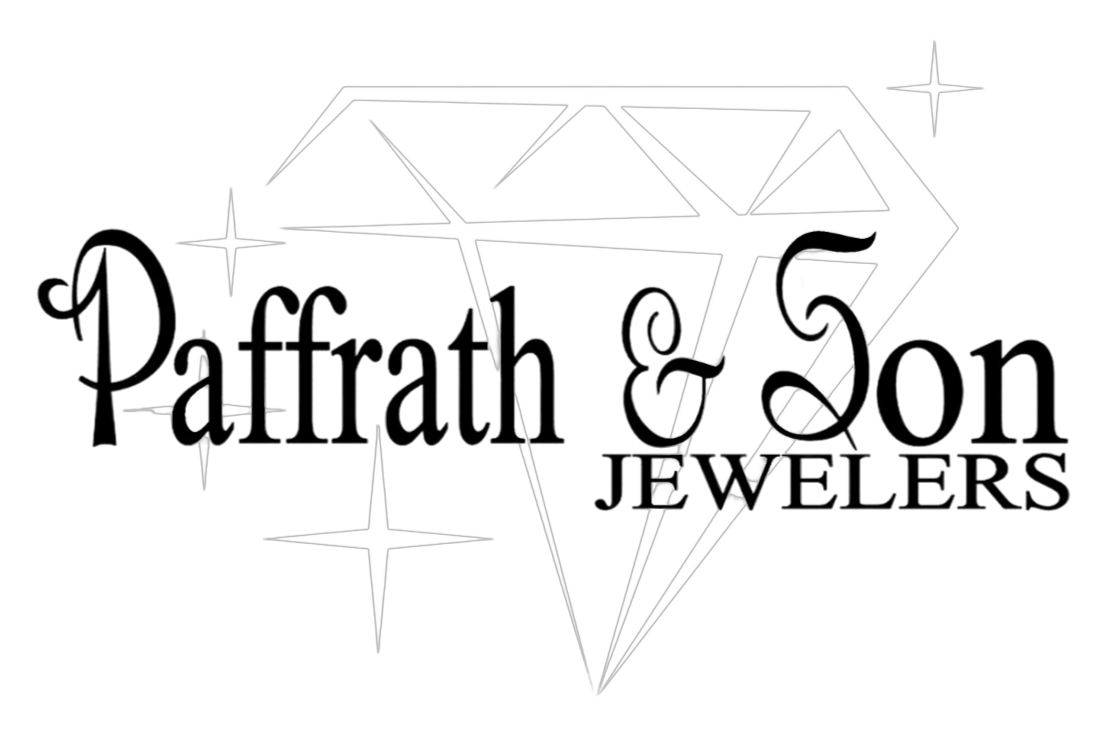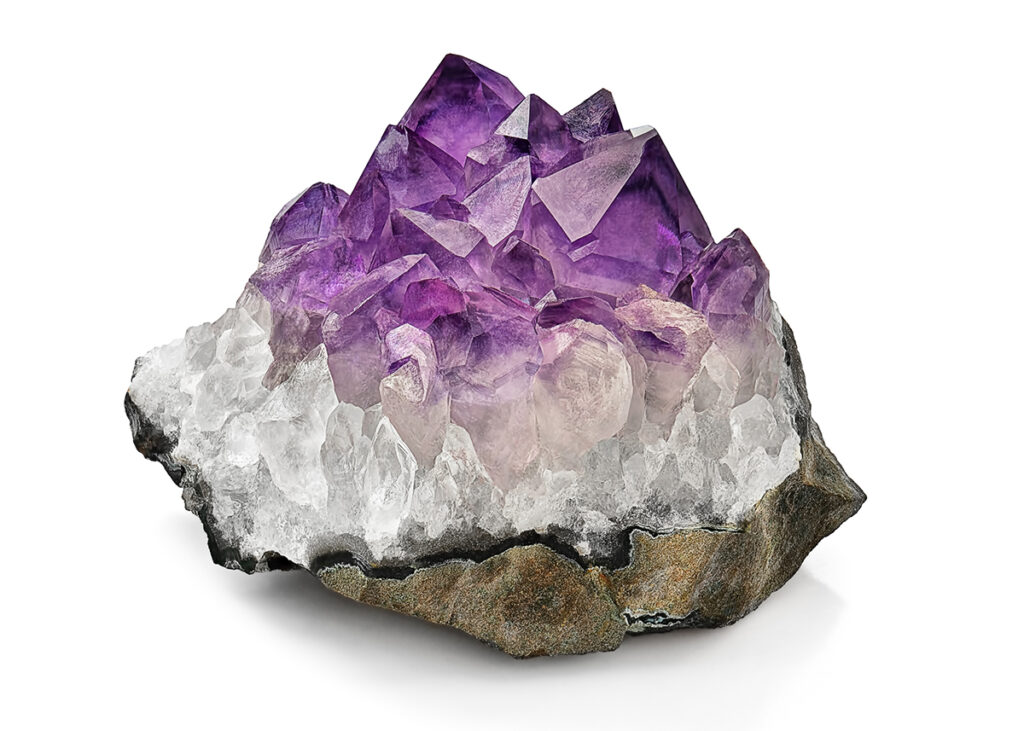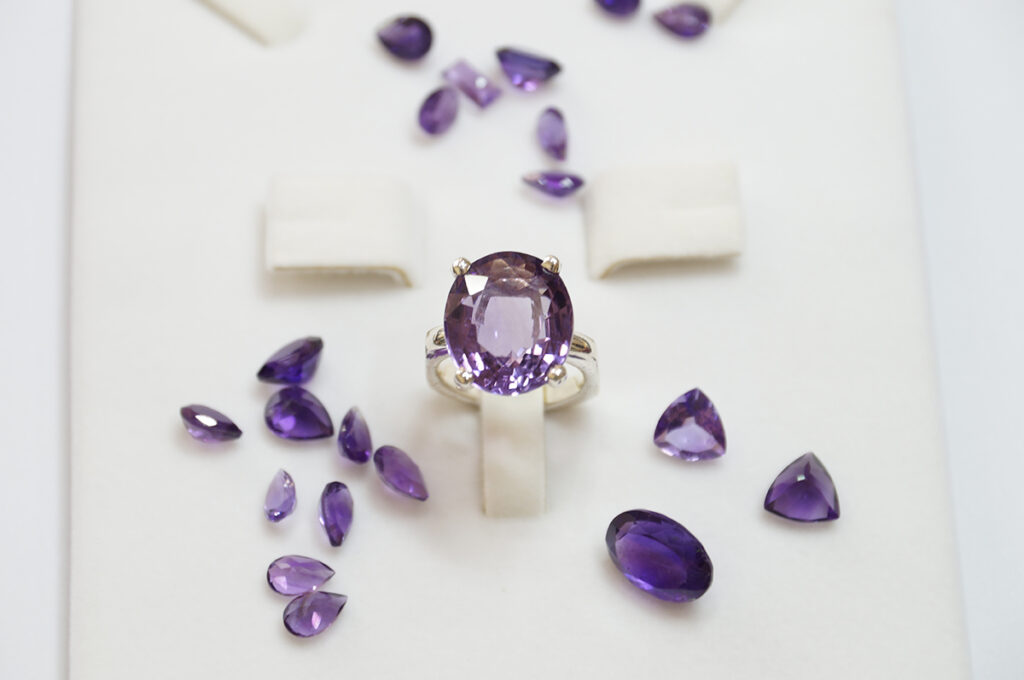Donec efficitur, ligula ut lacinia
viverra, lorem lacus.
February Birthstones: Amethyst
The month of February is a great month for birthdays, as the beautiful amethyst is considered the traditional birthstone. Though the weather may tend to be grey and cold, the exquisite violet color of the amethyst has attracted notice since ancient times. In fact, it’s use has been traced as far back as 25,000 BC. Amethyst has a storied history. In Greek, the name amethyst stems from a word meaning “a remedy from drunkenness”. Whether or not wearing this stone helps with over-imbibing is up for interpretation. In Greek mythology, the purple color was reminiscent of wine, and Greeks associated the gem with Bacchus, the god of wine. Ironically, amethyst was also believed to provide clear-headedness and quick-witted, especially in battle. In Europe during the renaissance, amethyst was believed to calm lovers overrun by passion. Catherine the Great was often adorned with amethyst, she likely held the common belief that wearing it is a statement of personal strength and inner resolve.
Amethyst is a variety of quartz containing manganese and iron inclusions which give the rich purple hues it is known for. Amethysts today are found across the globe but mined for jewelry most exclusively in Africa and South America. While Russia and Brazil were once the primary sources of amethyst, and still produce gem-quality specimens, they are no longer the primary sources. In the United States, our most abundant source of amethyst is believed to lie just outside of Phoenix, AZ. Amethyst was once considered an especially rare stone, but discovered deposits have made the stone more affordable in the modern day. Amethysts can grow to be especially large. Geodes containing Amethyst can even grow large enough for a human to easily stand inside.
While amethyst is well-suited for regular use, it can scratch and show wear over time. This can often be corrected by repolishing the gemstone. Some amethysts are treated with heat, generally darker-colored stones which heat treating permanently lightens. Some amethyst can fade when exposed to excessive and constant light, so that should be avoided. It is certainly a gem you can wear everyday with some light care. It is strong enough to withstand ultrasonic cleaning, but steam cleaning is not recommended.
Amethyst is a wonderful investment and promises to beautify for generations when properly cared for. When selecting an amethyst, it may be helpful to consider a few key things that can help you find the exact gemstone you’ve been searching for. The most important factor in buying a gemstone is that the wearer likes it. However, examining the color can be valuable. Avoid amethyst with rust-colored tints. If the stone is too dark, it could often appear black when worn. Of course, this too can be a matter of preference. Amethyst is like diamond, in that it’s clarity can vary. Visible inclusions can reduce value and be more susceptible to cracking or damage. This is more a concern with lighter colored gems, and many even prefer their gems to have inclusions, as they give a feeling of natural beauty and ensure its authenticity at a glance. One benefit to the relative abundance of amethyst reduces the price difference between gemstone carat weights. Of course, this too is primarily a matter of preference. Both petite and large pieces can be created to match your style and preferences.
Paffrath and Son Jewelers in Willmar, MN has nearly a century of service to the West Central Minnesota area. Our experienced team is passionate about jewelry, and you can rest east knowing that we give our all to ensure our customers are delighted with their jewelry purchase, just as we have for generations. We hope you will visit us and see our in-store selection of amethyst jeweler for you or your loved one. In addition, our master in-house jeweler, Jeff Paffrath, will work with you directly to ensure the custom jewelry is designed and constructed to your specifications. Our experts can provide you with the wisdom and experience to select or design a piece that will get noticed, and that you cherish.


